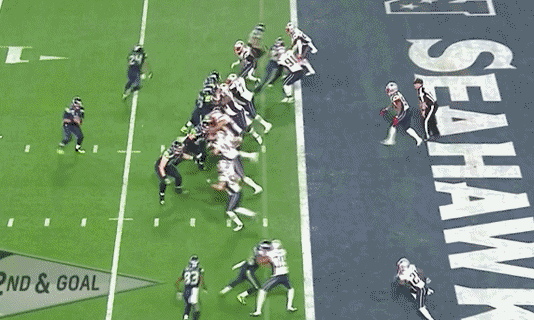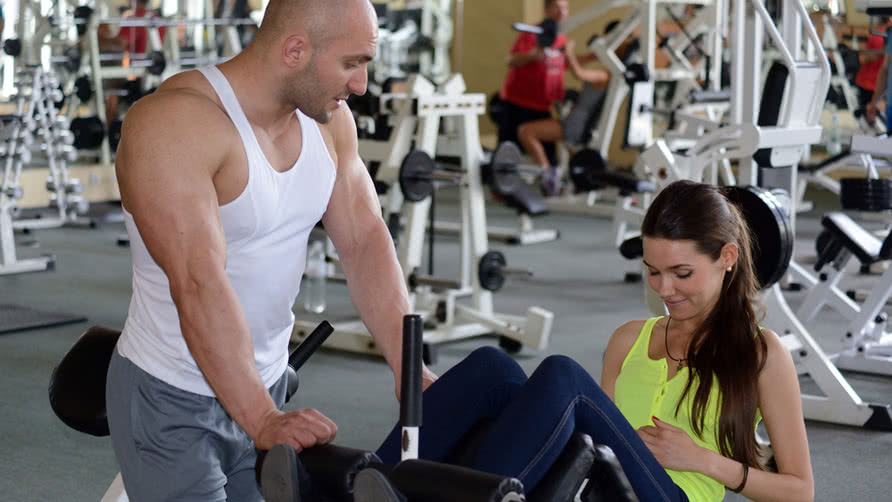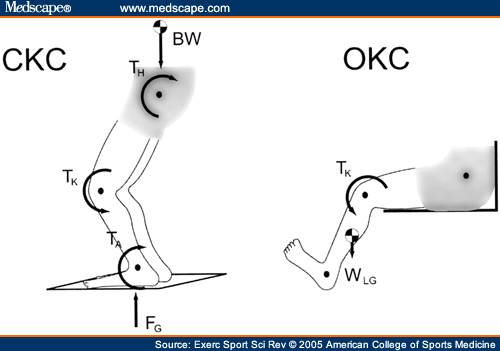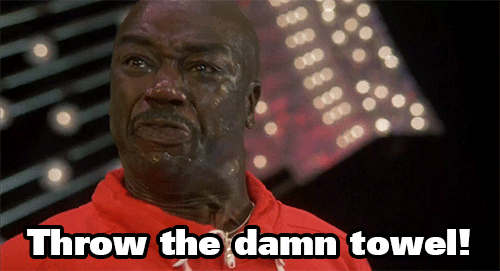
The Layperson’s Guide To Fitness: Vol. 3
Part 3: While In The Iron Jungle

This is the portion that I know a lot of you have been waiting for.
If you’ve been following along so far, bored to death, and have made it to this point: thank you for your patience.
If you skipped the first two parts and have just landed: welcome.
So we’ve got the mentality sharpened up, and we’ve put together a decent plan.
Now, it’s time to finally step into the belly of the beast: The track, the pool, the studio, the trail, the hill the stadium, and The Iron Jungle…or “Gym”, for you less savvy folk.
I’ve put together a few tips that I think everyone should follow if they want to maximize their time while exercising. We’re all busy people at this point, and time is crucial, so hopefully the following recommendations will help expedite your path to a healthier being.
Some of these tips will pertain only to gym life, but I don’t think this should be much of a problem, since the Gym Boom is still in full effect. However, if you don’t intend to “Gym” (verb, apparently) at all, then I’m sure you could still learn something from the sections that incorporate that aspect.
Let’s do it:
Find your “Zone”

I’ve been reading a few self-help books in attempts to appear super smart in my articles.
…Is it working?
One of the books I’ve been reading is Seattle Seahawks Head Coach Pete Carroll’s “Win Forever”, where he outlines his personal philosophy for success.

A main aspect of success, according to both Carroll and myself, is being able to get into a mental “Zone”.
What is the “Zone”, you ask?
Ever show up to a test fully prepared, and just crushed it?
You were in the zone.
Ever need to make a presentation and you felt like you controlled the whole room?
That’s the zone.
Have you ever played a game when it seemed like you were doing everything right?
The zone.

All of the above happened because you were focused and ready to go. That is the zone. It sounds corny, but it’s true. Your mind is powerful beyond human understanding. If you focus on a task and have full confidence, then you will be astronomically more likely to succeed.
The zone doesn’t come out of the blue, though. It’s easier to flip this switch if you’ve taken care of the mentality and preparation that I outlined above.
I get asked every now and then about my “secret” in term so my exercise habits.
My answer is always the same: the only thing I see between me and any other person is my ability to flip a switch and find my zone. I always find a way to get myself amped for a workout when the time comes.

It’s important to find out what helps you find your zone. A lot of it has to do with the goals that you’ve already set.
What motivates you?
Your ex cheating on you?
Your desire to be healthy for your spouse and family?
The endorphin rush you get when finishing an exercise?
Life stress that you need to burn off?
Listening to music that excites you and gets you moving?
Whatever it is, think of it before you start working out, and you’ll see how much easier it is to get through your exercises. This is all with caution, though: you don’t want to let your motivation consume you, but rather give you an extra push when you need one.

I’ll get a little personal for a second. I started playing sports in high school when I joined the football team. I was decent, but certainly not “good” by any means. I felt alienated because my nerdy interests (like Pokemon) made people think that I could never be a good athlete.

So then, during that offseason, I ran and lifted weights. A lot.
I lifted weights after school, and ran around 3 miles at night. While doing so, I used my frustrations as motivation to push me further. I thought about what motivated me on days when I didn’t feel like running, or times when I felt sore. I kept my motivation in mind.
And now I’m where I am today. See? A little motivation never hurt.
Now I obviously don’t have the same motivation now as I did then. Motivations change all the time, but the important thing is that you have one at all.
Find the zone, grasshoppers.
Skip Static Stretching When You Start

Quick question: Which is stretchier? A rubber band that’s been in the freezer for 12 hours, or a rubber band that’s been in the microwave for 30 seconds?
Now think of your muscles as a rubber band.
Your muscles are cold when you start a workout, and stretching immediately will only stretch out muscle fibers that aren’t ready for that kind of movement yet, which makes injury a lot more likely.
Instead, focus on a dynamic warm up to get your blood pumping. 10-15 minutes of doing cardio machines, jogging, or other drills are a great way to get your muscles nice and warm. Look up some “dynamic stretches” that you enjoy doing, and throw those in afterwards.

A good practice is also doing a “warm up set” with whatever exercise you plan on doing. It generally entails you performing the exercise with minimal weight, to get your body used to the movement.
If you still feel a bit tight afterwards, you can throw in some light static stretching. Don’t overdo it, though—save the prolonged stretching for after you workout.
I typically like biking for 10 minutes to get the blood flowing, followed by a quick jog and some foam rolling, but you can play around with whatever suits you.
Prioritize

We are in the midst of the busiest time of the year for gyms.
There’s going to be people everywhere, and it’s unlikely that you’ll always be able to do every workout that you planned.
With this in mind, I would skim through your schedule for the day and pick out a couple that are “musts” for the given day.
How you prioritize is completely up to you—all that matters is that you put first things first, and then try to adjust with your remaining exercises.
I personally prioritize workouts that use a barbell, since most gym rats like to spend a minimum of 6 hours on them while doing 275 sets of 3 reps.
Hurry the hell up

The maximum time I think a workout for the layperson should take is around 90 minutes.
You need to take advantage of your “Zone”, and having workouts that are too long will not only decrease your motivation over time, but it’s also detrimental to your progress.
Your body can only handle so much stress in a given day, and it’ll eventually start to eat at your muscle tissue because you’ve been beating it up so much and it’s run out of calories to consume.
Lifting weights or running for 3 hours is nothing to brag about: it’s stupid. You need to find the happy medium where you feel that you’ve put a good amount of work in without feeling like you need a trip to the ER.

If you find that your workouts run over 2.5 hours, it might be time to cut out some exercises that you can afford to lose and try transferring them to a different day.
Also….
Don’t be one of those people who hogs a weight rack or machine. It communicates that you have no regard for other people’s time, which will make you unpopular very quickly in the Iron Jungle.
Try to wait between 90 seconds and 2 minutes between each set. This will help you keep the intensity up, get some good cardio in, and shave time off your overall workout.
Superset if you’re strapped on time

This is a bit more for the advanced crowd, but it’s still good to know.
A great way to maximize your time is to incorporate “supersets”.
A superset is what you call it when you do two exercises in a row, with minimal rest in between. It keeps the heart rate up, gets a gnarly pump, and saves a bit of time.
There’s a lot of ways to play around with stuff like this, but a good place to start is to follow one main exercise with another that supplements the movement.
Some examples are:
Back squat + Box Jump
Bench press + Push up
Step up + lunge
Obviously, this will make your workout a whole lot more difficult, which is why it’s best to wait and assess your own workout capacity before incorporating supersets.
Also—don’t do them all the time. Or you’ll die.
Leave People Alone

I’m a feminist, so I’m going to direct this at both men and women:
Nobody goes to the gym/trail/pool to get hit on, so don’t go to these places with the sole intent being to hit on people.
Now, there’s nothing wrong with meeting someone and building a relationship over a common interest, but I’m sure most would agree that you can tell if another human is interested in you within 30 seconds or so.
Sure—there are definitely those individuals who apparently only exist in gyms to attract gawkers. People who wear revealing clothes, shout a whole bunch, and are constantly surveying the room to see who’s watching. I say let them be: their power only grows if you give them attention.
But I digress. The point I’m trying to make is that exercise should be a place of relative peace for people, so you shouldn’t deliberately intrude on that because they happen to look good in tights.
Form is your friend

What’s more beneficial?
A 185lb squat with good form?
Or a 225 squat with a curved back and improper knee placement?
…Almost seems a bit too obvious, right?
This advice has been beaten to the ground for years already, and I’m basically only including it because I think I have an obligation to.
So I’ll keep this short: Using good form with intermediate weight helps your body adopt the proper strength and biomechanics that will assist you in safely transitioning into heavier weight.
The end.
Stop. F*cking. Leg Pressing.
I could see why someone would find a leg press machine attractive.
They don’t require a lot of savvy to use, are found at every gym ever, and it’s easy to load up on the weight—which can be a huge confidence booster for a newbie.
But listen to me when I say this: Leg presses are one of the absolute worst exercises you can do.
Think about it—you’re practically using your lower back for foundation, and your knees end having to absorb and push the massive weight that the machine allows you to load.
The reason why is explained through the topic of “close chain vs. open chain” exercises.
“Close chain” basically means that either the hands or feet are in a static, non-moving positon—specifically the feet when talking about lower body. Examples are squats, dead lifts, and lunges.
Close chain is the good stuff, because they’re functional movements that allow the lower body muscles to work together.
“Open chain” workouts like leg presses, leg curls, and leg extensions have feet moving freely, which ends up putting heavy stress on knee joints.

Is there a muscular benefit to close chain workouts? Yeah, sure. Does the potential benefit outweigh the potential risk? Not by a long shot.
If you do nothing else after reading this, just stop fucking leg pressing. Please.
Embrace Free Weights….eventually

By now, you probably have realized that I’m a big advocate of weight training. I think that weight lifting is the #1 way to build lean, functional muscle.
That being said, I don’t use weight machines during my workouts. Ever.
Now, please keep in mind that I’ve been doing this exercise thing consistently for years. I’m familiar with some pretty complex free weight movements and am comfortable executing them regularly.
I’m not saying that you should ignore machines out the gates and start chest pressing 60lb dumbbells. Machines have come a long way in terms of function, and they’re a great way for a beginner to build some strength without feeling intimidated.
However, you probably want to start thinking about hitting those free weights eventually. Free weight exercises are more functional, require you to activate important stabilizing muscles, allow for free range of motion, and activate more muscle groups than machines.
Here’s a great quote that I read from Men’s Health around 2010:
“The barbell is king, and the dumbbell is queen”.
Machines are good for isolating muscle groups, which is mostly important to competitive bodybuilders and not laypeople.
Challenge Yourself

Here’s something to remember: you get stronger by putting your muscles under a level of stress that’s just outside the comfort zone.
If you’re dumbbell pressing with 40lb weights every time you do them, then you’ll indubitably reach that “plateau” that every frat boy has nightmares of.
Some people are perfectly okay with this—I top out on power cleans at around 225lbs nowadays, since I don’t do sports anymore and am satisfied with that weight.
However, for someone who’s looking to improve, an increase in intensity is the way to go.
Don’t be afraid to take it up a notch.
5 extra pounds (with a spotter).
1 more lap.
2 extra hill runs.
4 more minutes of running.
Stepping it up might render you unable to finish the workout.
Never fear, though—this is a good thing. Pushing yourself past your comfort zone will, in effect, eventually expand your comfort zone, which will make that extra set easier the next time around.
Breathe

Pretty self-explanatory here. You want to keep the oxygen flowing through your body, mainly to your brain and your muscles.
Breathing will help keep you loose, too. This might not sound like the best thing with an act as rigorous as exercise, but your body will actually perform at a higher level when it can move fluidly and without stress.
Often times, I’ll see people do entire sets while only taking one or two breaths.
Not only is that detrimental to your workout–it’s scary, because you can pass out from lack of air.
Know When To Fold ‘Em

I’m going to keep it rolling here with another quote. Here’s a tip my college Track coach, Travis Anderson, told me that helped change my career for the better:
“Your best ability, is your availability”
Travis meant that, in the long run, it’s okay to cut a workout short if it means that you’ll avoid hurting or overtraining yourself.
Picture this: You’re nearing the end of the workout, and you want to finish the day with some wind sprints when your hamstring starts to cramp. You’re fully in the Zone though, so you consider pushing through the cramp and finishing those sprints.
Let’s stop and think: What happens if you stop the workout and go home? You’ll most likely be able to come back and do the wind sprints another day. In the end, you miss out on one day of running. No harm, no foul.
But what if you decide to go all “Rocky Balboa” and try to push through anyway? Let’s say you end up going for it, and pull your hamstring in the process. You’re now forced to sit out 3-6 weeks because you didn’t just shut it down.

See what I mean? Letting go of one day is a much wiser decision to make than having to lose several weeks.
Know when to push through and challenge yourself, but also be smart about things and consider the bigger picture of your fitness.